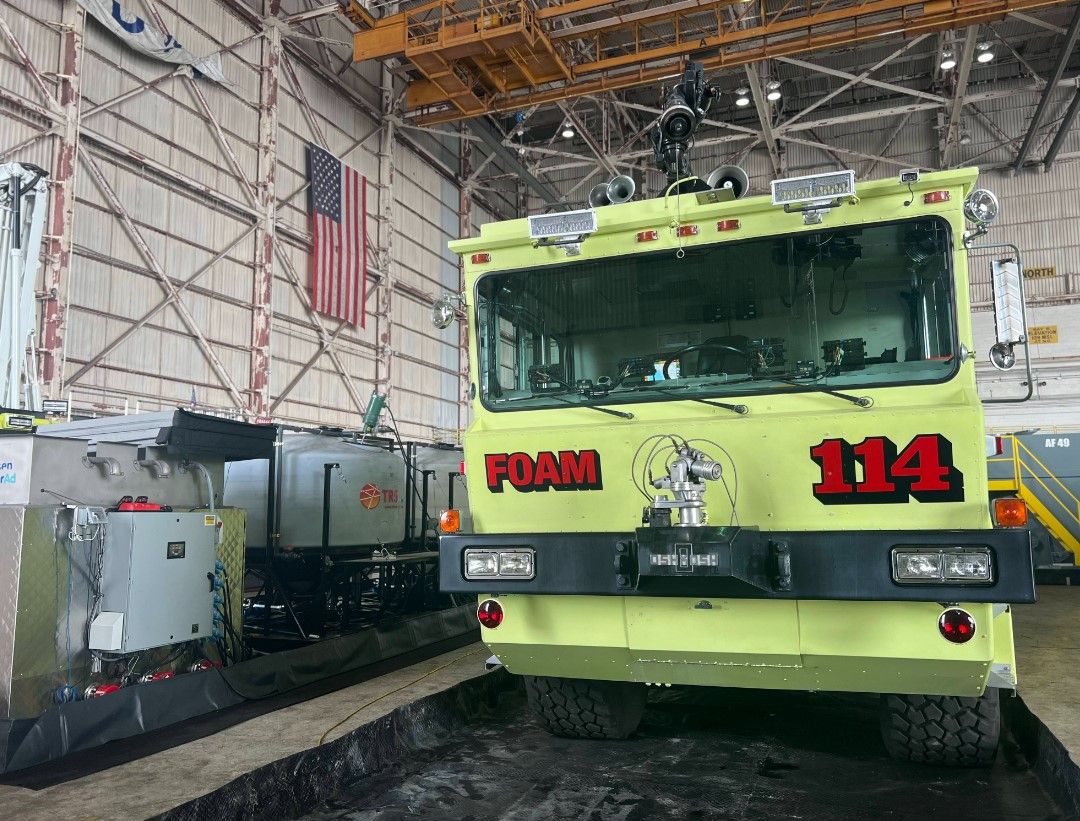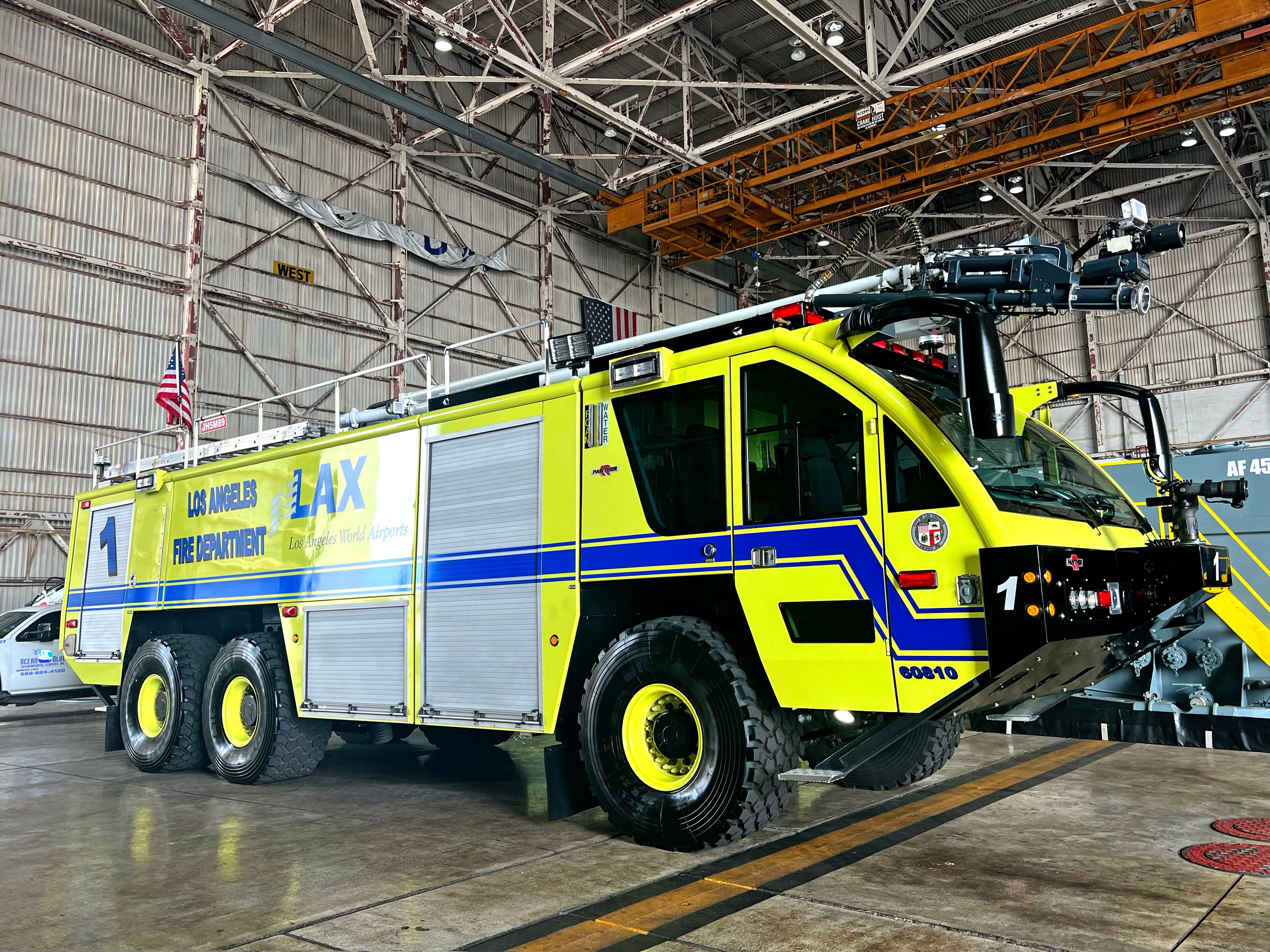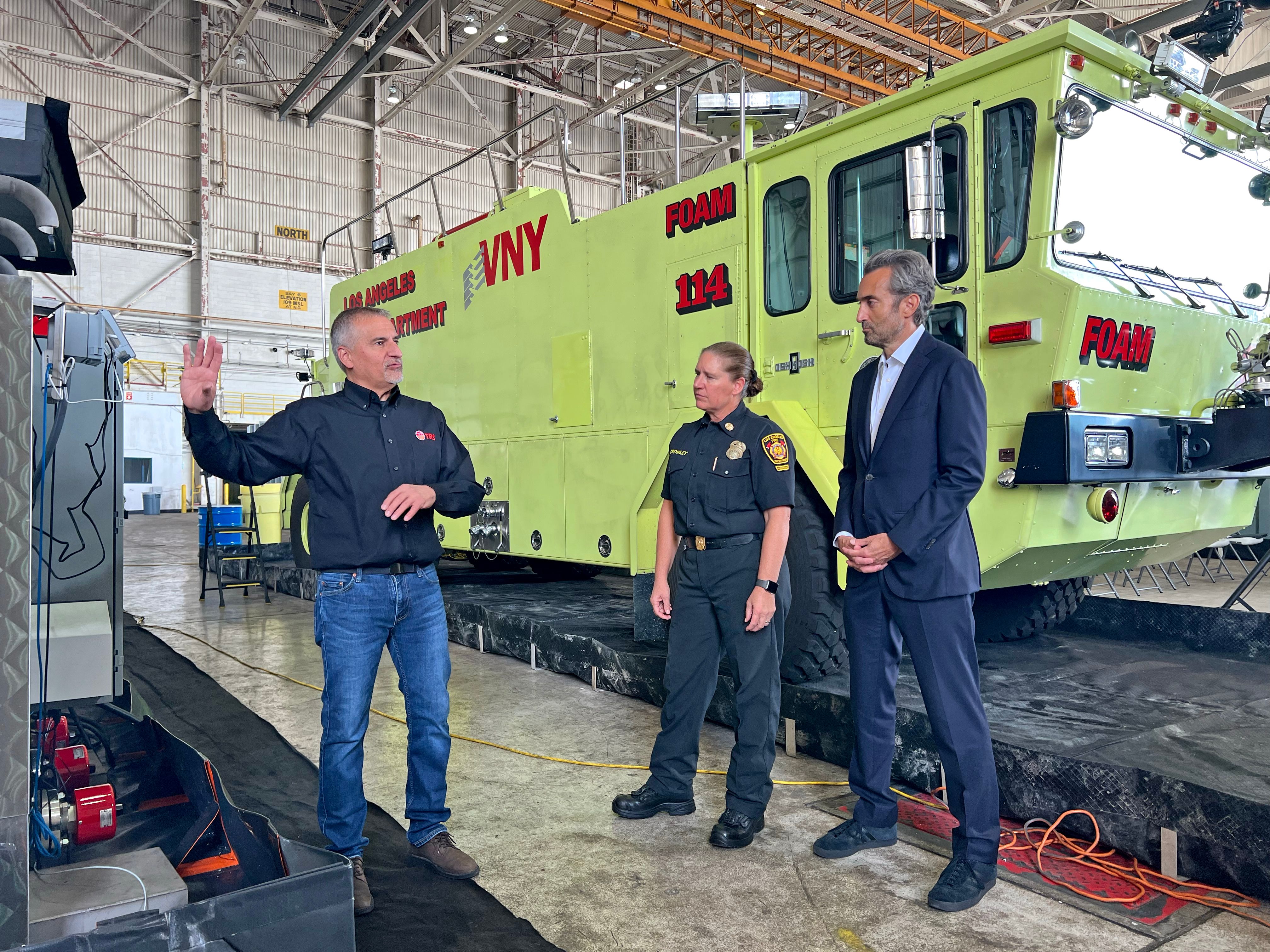Two airports across Los Angeles
are nearing completion of a project that will see firefighting foam removed from their entire fleet of Aircraft Rescue and Fire Fighting vehicles (ARFF), which are stationed at Los Angeles International Airport
(LAX) and Van Nuys (VNY). The move will see Los Angeles World Airports be the first group of airports in California to use fluorine-free foam (F3).
Meets Federal Aviation Administration best practice guidelines
Positioning LAWA as a leader in environmental stewardship, the project will cover 14 ARFF trucks at the two airports. Representing a dedication to firefighter safety, it also highlights the largest such transition undertaken in the United States. The move is not only meeting the Federal Aviation Administration
(FAA) best practice guidelines. Still, it is also on track to complete the safety upgrade on time and align with new federal and state regulatory standards.
Photo: Los Angeles World Airports
The removal process uses advanced cleaning technology, which reduces per- and poly-fluoroalkyl substances (PFAs) in its trucks by over 99%, minimizing potential exposure to these harmful chemicals to firefighters and the environment.
A word from LAWA’s Chief Executive
John Ackerman, Chief Executive Officer at Los Angeles World Airport’s, released this statement:
“This transition underscores our unwavering commitment to the safety of our operations and emergency response community, as well as our dedication to environmental stewardship. By taking this proactive step and collaborating with a deep bench of subject matter experts, from the remediation team to the Los Angeles Fire Department, we’re setting a new standard for airports in California and across the nation.”
LAWA has partnered with TRS Group, an industry leader in environmental remediation. TRS conducted the PFAS foam removal process using its patented cleaning technology, where Ocean Blue Environmental managed the proper handling and disposal of existing PFAS materials. Brett Trowbridge, president and CEO of TRS Group, noted:
“LAWA’s efforts are protecting the health and safety of firefighters, airport personnel, and the public and demonstrating their commitment to environmental protection. This project can serve as a model for the transition to F3 for other airports and facilities.”
Highlighting the operational readiness and long-term health and safety of firefighters is an essential step in the right direction for the industry. LAWA is working closely with the city’s Sanitization and Environment office, alongside Ocean Blue, to ensure proper disposal of existing materials. This is crucial to prevent chemicals from entering water and soil systems, which, as a result, protects delicate ecosystems and public health.
Photo: Los Angeles World Airports
Los Angeles World Airports has followed in Seattle-Tacoma International Airport
‘s footsteps, which also recently completed a similar transition. However, LAWA’s latest move is exacerbated given its scale and the advanced methods it has used collaboratively with its partners.
Photo: Los Angeles World Airports
PFAs are highly toxic and are a significant cause of water contamination for millions across the United States. According to Sokolove Law, there are links between PFA and bladder or breast cancer, and there is an increased risk of chronic kidney disease or mesothelioma, which is three times higher than those that have been exposed.




